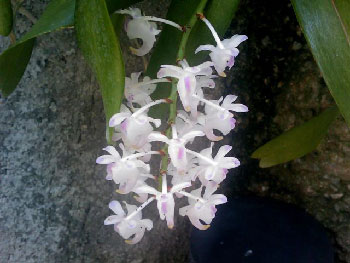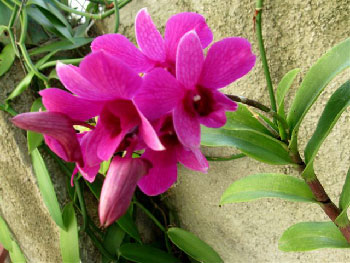Cuba/Orchids: “One of My Greatest Passions”
Photo Feature by Carlos Fraguela

HAVANA TIMES — Growing orchids is one of my greatest passions. This family of herbaceous plants – with a broad variety of specimens which grow on other plants, and some which spring directly from the ground – have fascinated me since I was a kid.
To have any measure of success with these peculiar and resilient plants, or at least with the kind commonly cultivated in Cuba, you need three important elements: light, heat and humidity.
Let me be more specific. Light: a lot of it, but it is advisable to keep it under four hours of exposure to direct sunlight a day. Heat: temperatures ranging from 10 to 37 degrees Celsius. Humidity: orchids hate any water that doesn’t come with the rain, they love humidity.
To make my point clearer, take the example of the dendrobium, which should not be exposed to more than three days of rainfall, as the roots can rot under such conditions. This, at least, is what my experience has been.

There are also highly delicate species of orchids which require a lot of attention and care, but they aren’t too numerous.
The reproductive mechanisms of these plants are rather interesting. The flowers are equipped with hooks used to attract certain pollinating animals, which can be insects, birds, spiders and even human beings. People, who harvest vanilla fruits to extract the much-coveted flavor, sow and propagate the plants, pollinizing it manually. A nice example of plant-animal mutualism.
Other species are cultivated by people because of their aesthetic value (the extravagant beauty of their flowers make these plants difficult to ignore). Another unique characteristic of orchids is that different varieties can couple, producing hybrids which never resemble their parents. This means that new flowers which are extremely difficult to classify, with forms and colors that only the creative genius of nature could conceive, are constantly springing up.

Years ago, I read a book which claims that thousands of orchid species have been classified by man and, if you count the hybrids that those who cultivate these flowers have produced, the number easily goes up to 25 thousand.
I cannot help but think that, having had so much time to reproduce and adapt to very specific environments, they have gotten ahead of those human beings intent on classifying other living creatures and have flourished into a family of almost infinite diversity to make their jobs a little harder.
I could say much more about what orchids have taught me about flowers, but I prefer to leave those comments for a future post. I leave you with photographs of my plants.
Click on the thumbnails below to view all the photos in this gallery. On your PC or laptop, you can use the directional arrows on the keyboard to move within the gallery. On cell phones use the keys on the screen.
















Why is it that the sages do not speak about this? Orchids how long has it been since those who have abandoned Cuba have seen such? (not in the netherlands)